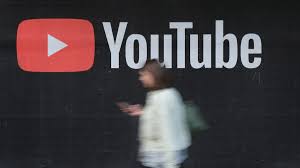In a significant policy shift, YouTube has announced that it will no longer remove content suggesting fraud, errors, or glitches in the 2020 US Presidential and other US elections. This decision has sparked a debate about balancing freedom of speech and preventing the spread of misinformation. In this article, we will explore the reasons behind YouTube’s reversal, the implications for advertisers and content creators, and the wider context of misinformation policies in the tech industry.
The Background: YouTube’s Election Misinformation Policy
YouTube initially implemented its policy against election misinformation in December 2020, following the certification of the 2020 election results by several states. The policy aimed to prevent the spread of misinformation that could incite violence or cause real-world harm. However, over the past two years, this policy has resulted in the removal of tens of thousands of videos, leading YouTube to reevaluate its effects in the current landscape.
The Reversal: A Shift Towards Free Speech?
On Friday, YouTube announced its decision to reverse its election misinformation policy. The company expressed concerns that the policy may unintentionally stifle political speech and decided to stop removing content that advances false claims of widespread fraud, errors, or glitches in the 2020 and other past US Presidential elections. This change reflects YouTube’s attempt to strike a balance between freedom of speech and preventing the spread of misinformation.
Implications for Advertisers
The reversal of YouTube’s election misinformation policy has several implications for advertisers. Firstly, advertisers may be concerned about their ads appearing alongside content that spreads election misinformation, leading to brand safety concerns. Advertisers should carefully scrutinize where their ads are being placed to ensure alignment with their brand values. Additionally, repeated ad placements on videos spreading election misinformation could potentially lead to consumer boycotts, highlighting the importance of brand reputation management.
Implications for Content Creators
Content creators, particularly those who focus on political content, may benefit from the reversal of YouTube’s policy. The removal of content that advances false claims about election fraud creates new monetization opportunities for creators who were previously penalized under the old policy. With their content no longer being removed, creators might experience increased viewership, leading to higher ad revenue and more engagement. However, there is also a potential risk of backlash from viewers who disagree with the misinformation or believe that YouTube should take a stronger stand against such content.
The Wider Context: Balancing Free Speech and Misinformation
YouTube’s decision to reverse its election misinformation policy reflects a broader struggle in the tech industry to balance freedom of speech and prevent the spread of misinformation. Tech platforms face the challenge of curbing misinformation while ensuring that individuals can express themselves freely. This delicate dance between freedom of speech and preventing harm has become increasingly relevant as misinformation continues to impact public discourse and democratic processes.
Conclusion
YouTube’s reversal of its election misinformation policy has raised important questions about the balance between freedom of speech and preventing the spread of misinformation. Advertisers must be vigilant about where their ads are placed to maintain brand safety, while content creators may benefit from new monetization opportunities. However, it is crucial to recognize that the responsibility to curb misinformation is a collective task shared by tech platforms, creators, advertisers, and consumers. By promoting critical thinking and fact-checking, we can all contribute to a more informed and responsible digital landscape.

No comments! Be the first commenter?